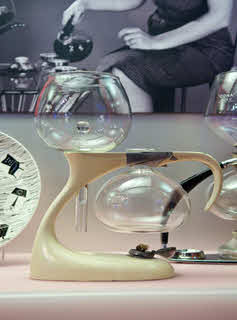
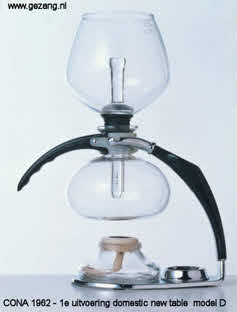
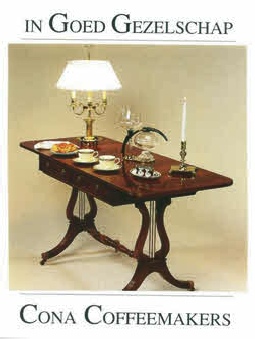
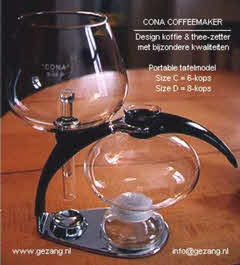
The popular British poster designer Abram Games shortly after the second world war came to meet a director of the Cona Coffee Machine Company. He argued, that the design of his basic Cona device could be improved, notwithstanding the delicious coffee that he made with it every day.
His model "De Luxe" possessed all the features necessary to prepare a perfect cup of coffee -
Almost identical to Albert Cohn's first patented design (see drawing on the right) dated 1910, his early Cona was still a crude chemist’s laboratory contraption, known as an "extraction column".
The graphic designer Abram Games took a fresh look at it from the creative perpective of an artist. He was well acquainted with modern insights into ergonomics, had practical knowledge of modern materials, and took a keen interest in the latest manufacturing techniques.
In 1947 Games presented his first sketch in the Cona factory in Wimbledon (near London, England). This set the course for a complete re-
Abram Games had asked himself important questions in search of a better design, and found creative answers, which have become quality features of every Cona produced since then.
Games was a practical thinker. He created art, that was faithful to his motto "Maximum Meaning, Minimum Means". He used powerful symbolism to achieve this, as an image so often can tell you more than a 1,000 words.
Precisely for this talent, the British government had employed him during the war to successfully bring important messages across to the civilian population. Posters, that explained how every person could help the war-
Accomplished and talented with pencil and paint, the artist Games had a very pragmatic approach to what deserved to carry his signature. He tested the quality of his work, long before he finished it, by seeking the honest opinion of friends and family on a work-
The normal glass used for pre-
Of course, Games and the Cona factory chose this ideal new type of laboratory quality glass, and combined it with a clever new design for the upper funnel and lower bowl. They realized, that temperature fluctuations cause material to expand when it heats up and shrink once it cools down again. Thin shapes -
Thin glass also helps the transfer of heat better, as in comparison to e.g. metal objects glass is a bad conductor.
Thick-
The Cona Rex was his first Cona re-
After the Rex model had been taken into production, the droplet form was found to be too expensive for optimal mass production. Games recognized a conflict with his own motto, prompting him to re-
Both the Cona Rex and the Cona New Table Model are now part of the permanent collection of the British Science Museum.
During his lifetime Abram Games received recognition and was honoured for his achievements. He was awarded the title "Royal Designer for Industry" (RDI) and the "Order of the British Empire". If you want to go an see an exhibition of his work, then please click on this link to see his website.
Now let us take a closer look at some specific parts.
1) The glass filter rod.
This unique sieve system makes the Cona the only
"all-
With other lesser brands a plastic fluted dish, often needing a (disposable) cloth or filter paper, acts as the separator. This dish is held in position by a steel spring hooked on the bottom of the spout. An unnecessary compromise.
The patented Cona ‘All-
2) The arched stand. The Cona stand is made out of solid cast metal parts. The chrome plated base provides a sturdy footprint. From there it runs up gracefully with the black bow shaped stem and ends with a solid cast chrome plated fork. The black stem provides an opening to place the funnel into after the coffee has been brewed. This opening is a very useful facility because making Cona coffee is a sight to look at at the dinner table with your guests.
3) The handle grip. The handle of the Cona is not, like other brands, made of common plastic but of durable solid bakelite. The graceful bowed shape of the stem is continued in the bend of the handle. It provides a nice grip for both right and left-
4) The flame-
With boiling water in the bowl and after you have ignited the spirit burner, it will take 4 minutes for the water to rise to the upper chamber of the funnel, and another 2 minutes after you extinguished the flame for the brew to return to the lower bowl.
We timed this using the original Cona all-
With a Cona you will always enjoy a ‘cup-
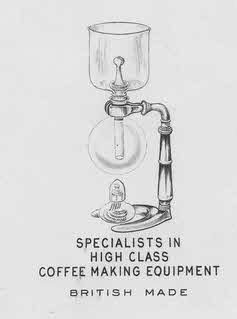
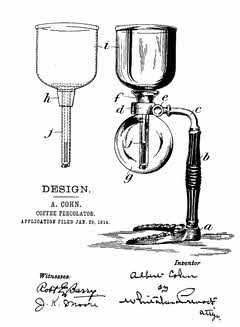
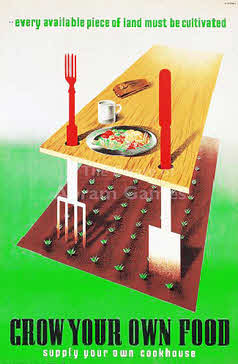
How Abram Games designed our modern design
classic for the set dinner table in line with his
motto, from the post-
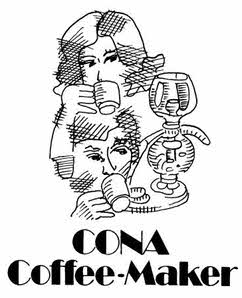
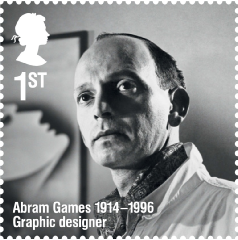
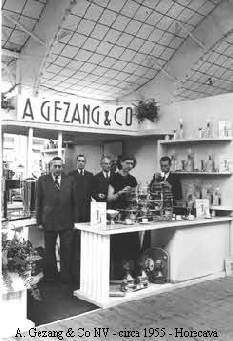

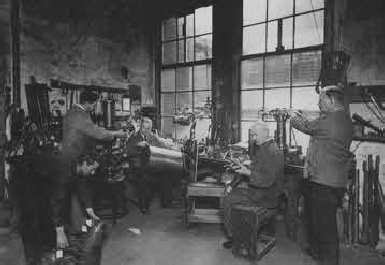
Copperware factory A. Gezang & Co NV in 1930.

CONA Factory A. Gezang & Co BV -
Tel. +31-

CONA Coffee History

CONA Factory A. Gezang & Co BV -

‘maximum meaning, minimum means’